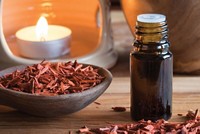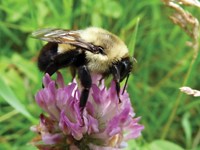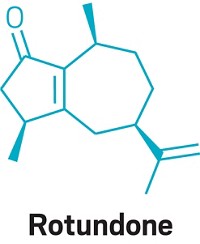Advertisement
Grab your lab coat. Let's get started
Welcome!
Welcome!
Create an account below to get 6 C&EN articles per month, receive newsletters and more - all free.
It seems this is your first time logging in online. Please enter the following information to continue.
As an ACS member you automatically get access to this site. All we need is few more details to create your reading experience.
Not you? Sign in with a different account.
Not you? Sign in with a different account.
ERROR 1
ERROR 1
ERROR 2
ERROR 2
ERROR 2
ERROR 2
ERROR 2
Password and Confirm password must match.
If you have an ACS member number, please enter it here so we can link this account to your membership. (optional)
ERROR 2
ACS values your privacy. By submitting your information, you are gaining access to C&EN and subscribing to our weekly newsletter. We use the information you provide to make your reading experience better, and we will never sell your data to third party members.
Environment
Making Premium Wine And Tea
South Africa turns to chemistry to improve quality of agricultural products
by Britt E. Erickson
December 17, 2012
| A version of this story appeared in
Volume 90, Issue 51

The South African government sees agriculture and the processing of agricultural products as a promising avenue for creating jobs and boosting the economy. It is investing in research projects to get farmers in South Africa interested in growing emerging products such as honeybush, a plant used to make a sweet, floral, honeylike tasting tea. But when it comes to more established products, such as wine, industry provides the lion’s share of R&D money, with the government kicking in a small amount of funds.
COVER STORY
Making Premium Wine And Tea
From dark, velvety pinotage to fruity, lip-puckering chenin blanc, South African wine is growing in popularity worldwide. The industry takes quality seriously and, along with the government, is investing in scientific research to find out what tastes and aromas consumers prefer.
At Stellenbosch University’s Institute for Wine Biotechnology, in the heart of South Africa’s wine-growing region, researchers are integrating chemical profiling of wine with analysis of the way such chemicals affect the sensory characteristics. Then they add consumer research to get a better handle on what people like to drink. So far they have studied fewer than 100 of the 1,000 or so chemicals found in wine.
Chemical profiling is like taking a fingerprint of the wine, explains Hélène H. Nieuwoudt, a spectroscopist at the institute. Using gas and liquid chromatography, mass spectrometry, and infrared spectroscopy, she and her colleagues measure the major volatile chemicals in wines, showing everything from the indirect effects of soil conditions to seasonal variations.
Such profiling is extremely useful to verify the authenticity of wine, says Nieuwoudt. “You can verify the wine-making technique. If the wine was matured in wood, you can actually see that on the fingerprint,” she notes.
Chemical profiling is also conducted on grapes that are still on the vine to monitor ripening or diseases. Nieuwoudt and colleagues are developing nondestructive methods for measuring critical parameters in the vineyard, including sugar content and the organic acid profile of grapes.
Such information is used to determine the optimal time to harvest grapes, without having to taste or destroy any grapes. Once grapes have been picked, chemical profiling is also used to evaluate their quality and determine whether they will be used to make premium quality wine, a blend, or bulk wine, Nieuwoudt says.
Chemicals in wine can be divided into compounds originating from the grapes, such as monoterpenes; fermentation-derived compounds, such as alcohols, esters, and fatty acids; and compounds formed during the aging or maturation process, such as volatile phenols and oak lactones, says Andreas G. J. Tredoux, an analytical chemist at the institute.
For example, sauvignon blanc has an asparagus or green pepper taste that has been attributed to a monoterpene originating in the grapes, and chenin blanc has a tropical, guavalike taste. The chemical that is responsible for the guava flavor has yet to be identified, but Tredoux and colleagues suspect it is a volatile thiol compound.
Terpenes and related compounds in grapes are bound to sugars. During the wine-making process, those bonds are broken. Once terpenes are free from sugar they have a quite intense aroma, Tredoux says.
Fermentation-derived compounds include ethanol, methanol, propanol, butanol, esters, and fatty acids—all of which are in equilibrium. That equilibrium shifts with changes in acidity, leading to changes in the amount of each compound in the wine. Numerous factors beyond pH also affect fermentation-derived compounds, including the type of yeast, the fermentation temperature, and the contact time with the yeast after fermentation is complete, Tredoux notes.
During the final phase of wine making, wine is often aged in a wooden barrel or wood chips are added, particularly to red wine. The wood produces compounds such as whisky lactone and vanillin, giving wine a roasty characteristic.
Once the researchers obtain the chemical profile of a wine, they combine the information with sensory characteristics determined by a panel of trained people. “We train human panels to act as instruments,” Nieuwoudt says. The panel identifies flavors and aromas, such as fruitiness or berry, and determines whether the intensity is strong or weak. The panel also looks at the visual appearance of the wine. The goal, after some statistical analysis, is to determine how the chemistry influences the sensory characteristics.
Ultimately, of course, winemakers want to know how those characteristics influence consumer preference. For chenin blanc, for instance, female consumers aged 20 to 34 seem to prefer a more fruity style and males prefer a more complex, less fruity style. “Ultimately you want to keep the consumer happy,” Tredoux says. “Our job is to figure out what it is chemically that they don’t like, so the winemaker can decide, for example, ‘Let’s use this yeast strain and not that one.’ ”
Wine is a fairly large export product for South Africa. The country is ranked eighth in the world in terms of wine production and 12th in terms of surface area devoted to wine production. With only a limited area that is suitable for growing grapes, primarily in the Western Cape, South Africa is known for the quality of its wines more than the quantity.

Another growing, albeit small, export product for South Africa is rooibos tea, and more recently, honeybush tea. The rooibos plant is indigenous to the Western Cape, but today it is primarily cultivated on plantations in the Cederberg area of South Africa near Clanwilliam. Honeybush tea is a nascent market compared with rooibos tea. Although some research is being done on cultivating honeybush, it is primarily harvested from the wild in the natural shrubland called the fynbos throughout the Western and Eastern Capes.
Both rooibos and honeybush teas are gaining popularity. They are known for their antioxidant and immune-boosting properties, and neither one contains caffeine. Research into the beneficial health effects, flavor identification, and quality aspects of rooibos and honeybush teas has been funded by both the South African government and the tea industry.
Government scientists at the Agricultural Research Council (ARC), the primary agricultural research institute in South Africa, have taken a lead role in honeybush tea research. One of their goals is to develop new products, such as dietary supplements and cosmetics, using extracts from the plants. They are also focusing on improving the quality of the teas and training farmers how to cultivate the plants.
“We must understand the chemistry of the plant to develop new products or to improve the quality,” says Lizette Joubert, a chemist with ARC’s Postharvest & Wine Technology division in Stellenbosch. Joubert worked with rooibos tea as a Ph.D. student and began focusing on honeybush processing in 1993.
Today, Joubert is particularly excited about a chemical in honeybush called mangiferin, a xanthonoid also found in mangoes and mango tree bark. Mangiferin has been shown to have antimicrobial, antioxidant, and antidiabetic properties. Mangiferin content is quite high in at least two species of honeybush, Joubert says. She is hoping to produce a mangiferin-rich extract from honeybush because it is more renewable than mango tree bark, she says.
Joubert is also interested in extracting hesperidin from honeybush. Hesperidin is a flavanone glycoside found in citrus fruit. The compound is known for its antioxidant and anti-inflammatory properties.
Over the past 20 years, much of Joubert’s research has focused on improving the quality of honeybush tea. When she first began working with honeybush, “the quality was horrendous,” she tells C&EN. “People had fermentation heaps, but it was like making compost,” she recalls.
Joubert studied the effects of fermentation time and temperature on honeybush tea quality and helped the industry develop a standard process. Today, honeybush tea is sold in more than 25 countries. Demand for honeybush is outpacing supply.
Part of the reason for the low supply is that the majority of honeybush is still harvested from the wild, but efforts are under way to cultivate the plant. Joubert and her colleague, Marlise Joubert, no relation, have been working with various communities in the Eastern and Western Capes to help farmers get started growing honeybush.
One project, for example, was carried out over three years in the town of Genadendal in the Western Cape, where the people often harvest honeybush from the wild for themselves. The researchers established a demonstration plot to determine whether a particular species of honeybush can grow there and then trained the local people. At the end of the project, some of them wanted to carry on because they saw the potential to bring in some income, Lizette says.
The biggest hurdle is a lack of tea-processing facilities, Lizette notes. “This is the major thing I see that is keeping the industry back,” she tells C&EN. “Processing is expensive, and not all farmers want to do it themselves. But if you don’t have a processing plant near you, transport costs become prohibitive,” she says.
So far, a few communities of farmers are cultivating honeybush, but it is very slow going, Marlise tells C&EN. The crop is attractive to farmers because it is a legume and therefore fixes its own nitrogen. Farmers don’t need to add nitrogen fertilizer, and the amount of phosphorus required is low. In addition, honeybush is perennial and can survive up to eight years.
Most honeybush is grown without pesticides. The biggest threat is not insects or deer, says Cecilia Bester, a senior researcher in plant breeding and genetics at ARC. “People are actually our biggest problem,” she points out. As the demand for honeybush grows, more and more poachers are stealing it from private and public lands. Although a permit is required to harvest honeybush, Bester says, many people are doing it illegally.





Join the conversation
Contact the reporter
Submit a Letter to the Editor for publication
Engage with us on Twitter